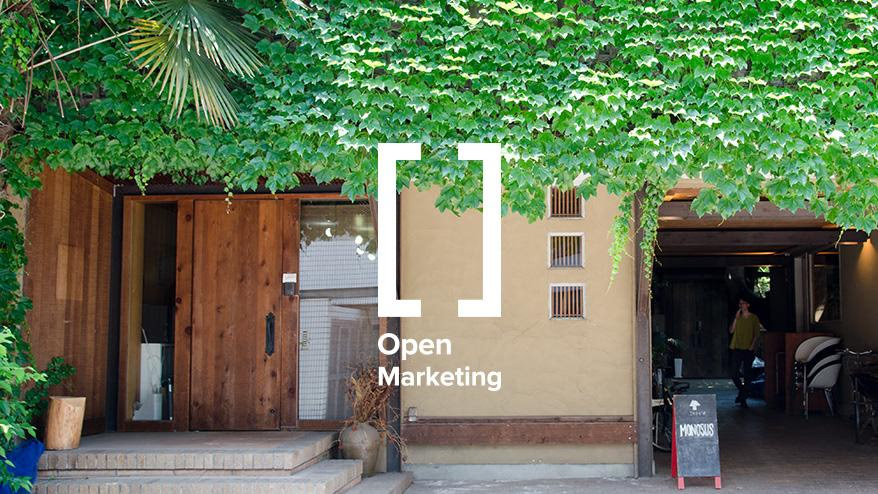みなさん、こんにちは。モノサス代表の林です。
前回は Open Marketing に取り組むための Step.1として
「顧客を信じる」ということをお話しました。
- 多くの経営者の悩みは、売上や利益のこと、自分自身が忙しいといったことよりも自分がやりたい商売を、自分がやりたい相手とやれていないことである
- 一方で経営者の多くが、「商売にならないから」という理由で自分がやりたい商売のかたちを顧客に伝える努力をしていない
- 自分の商品・サービスに自信がないわけでも信念がないわけでもないのに顧客に伝える努力をしないのは、顧客のことを信頼していないからである
という内容でした。
今回は、なぜ顧客を信じることができないのかを
詳しく解説したいと思います。
経営者・マーケッターが抱えるジレンマ
さきほどのまとめでもお伝えしたことですが、
経営者やマーケッターの多くは、自分のやりたい商売のかたちを
そのまま顧客に伝えても、「それでは商売にならない」と思っているようです。
だから目の前の売上をとるために、自分のやりたい商売のかたちを
曲げることも「やむなし」と割り切ってビジネスをやっているのです。
たしかに現実には、名前も実績もない企業が
理想ばかりを掲げたところで誰からも見向きもされないことは容易に想像できます。
それを避けるために、まずは目の前の顧客の求めに応じて
妥協ともとれる商品・サービスを提供しながら
あるべき姿を模索していくことは当然のことであるとも言えます。
一方で、そのまま目の前の仕事、目の前の業績に囚われていると
いつまでたっても、やりたい商売をやりたい相手とやれないという
ジレンマに陥ってしまうのです。
これまで私は、多くの企業の経営者やマーケッターの方たちと
どのようにしてこのジレンマから脱却するかを議論してきました。
その議論の中で経営者やマーケッターの多くに共通していた考えは、
「いまの商売のやりかたで利益が出たら、その利益をもとに
徐々にやりたい商売のかたちにきりかえていこう」
というものでした。
しかし、商売を始めたばかりの頃は別として、
ある程度顧客を得て、まわりはじめているビジネスでは
固定客がもたらしてくれた利益を、新規顧客の集客につぎ込んでいるというのが実態です。
(これについては Vol.5、Vol.6 で詳細にお伝えしました)
つまり、多くの経営者・マーケッターの考える
「いまの商売のやりかたで利益が出たら…」というのは、
新規顧客を増やすことではなかなか利益が出ない以上、
滅多なことではうまくいかないのです。
やりたいことをやるのは儲からない、という勘違い
「自分のやりたい商売をやりたい相手とやれない」というのは、
言い換えるならば、妥協した商品・サービスしか買ってくれない
新規顧客を集め続けなければならないことへの不満であり、
それにともなう見込み客への不信感なのです。
「顧客を信じることができない」のは
固定客ではなく、新規顧客の集客のことばかりに目を向けてしまうからです。
少し説明がまわりくどくなりましたが、ここに問題の本質が隠れています。
経営者・マーケッターの多くは、やりたい商売をやりたい相手とやるためには
新規顧客をより多く、より効率的に集めることで利益を出し、
その利益によって、「儲からなくてもいいからやりたいことをやろう」
と暗に考えているのです。
つまり、多くの経営者・マーケッターの深層心理には
やりたい商売をやりたい相手とやるのは儲からなくて、
それを曲げたほうが利益が出るという思い込みが少なからず存在するのです。
しかし、これは全くの勘違いです。
実際には、やりたいことを曲げてまで集めてきた新規客が
あなたの会社に利益をもたらしてくれることはほとんどありません。
あなたの会社の利益の大半は、あなたが知らないうちに
なんどもなんどもあなたの会社の商品・サービスを購入してくれている
固定客がもたらしているものです。
これについては、ぜひ一度あなたの会社の売上と利益の状況を
数値に基づいて冷静に分析してみることをおすすめします。
ほとんどの企業では、上位1割〜2割の固定客が利益の大半をもたらしています。
「顧客を信頼することができない」という感覚は
このような状況が生み出していると言えるでしょう。
利益の大半を費やし、やりたいことを曲げてまで必死に集めた
8割の顧客は常に不安定で、継続的にリピートしてもらうためには
細心の注意をはらって接しなければならない。
もう何年もそんな状況を続けているのにも関わらず業績は一向に向上しない。
ひとことで言うならば、そういう状況に疲れてしまっているのです。
きちんと目を向けるべきはすでにあなたの会社の
商品・サービスを支持してくれている固定客です。
彼らの中には、あなたの会社を支持する明確な理由があり、
むしろあなた自身よりもあなたの商品・サービスが持つ
本質的な長所を見抜き、上手にそこと付き合っています。
これまで多くの経営者・マーケッターと接してきて
驚いたことのひとつは、経営者・マーケッター自身が
自分たちの商品・サービスの本質的な長所が何なのかを
ほとんど把握していないことです。
そんなことはない、と言いたくなるかもしれませんが、
私がこれまで数多くの経営者・マーケッターの方に
「いま目の前であなたの商品・サービスを買ったお客様が
あなたから買おうと思った理由を説明できますか」
と質問をした際に、きちんと答えることができた方はほとんどいません。
仮に答えることができたとしても、それは本人の想像でしかありません。
いまこの文章を読んでいるあなた自身も、
ご自身が普段扱っている商品・サービスの本質的な長所を
本当に理解しているでしょうか。
結論から申し上げると、
自分の長所を知ることなしに、顧客を信頼したマーケティングを
展開することは不可能なのです。
今回は「なぜ顧客を信頼できないのか」について掘り下げてみました。
次回からはさらに掘り下げ、固定客からいかにして
自社の本質的な長所を学ぶかをお伝えし、
顧客を信頼し、やりたい商売をやりたい相手とやれるようになっていくための
ステップを解説していきたいと思います。
今月も最後までお読みいただきありがとうございます。

